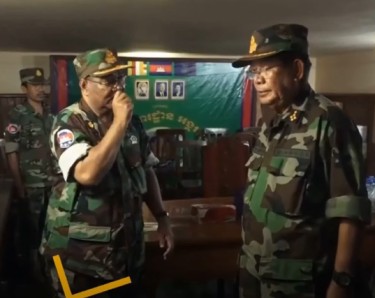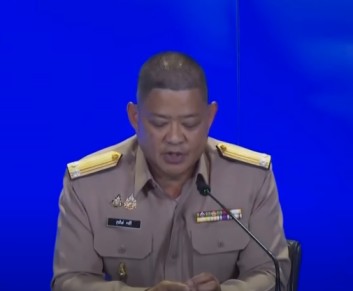The Thailand-Cambodia border is once again in global headlines as long-standing tensions erupt into open conflict. What began as local skirmishes has now evolved into a serious military and diplomatic crisis, impacting thousands of civilians and straining regional stability. Here’s a detailed overview of the situation, broken down into 10 major developments.
1. Firefights Erupt Near Historic Border Temples
The current wave of conflict erupted near the Ta Moan Thom temple complex—an ancient site located along the contested border. Both Thailand and Cambodia claim ownership of this culturally significant area. On July 24, 2025, gunfire and mortar rounds were exchanged between soldiers from both sides, turning the disputed area into a battlefield. While Thailand accused Cambodia of initiating the attack, Cambodian officials maintain that Thai forces violated their territory first.
2. Conflict Intensifies with Heavy Weapons and Rocket Launchers
The initial gunfire rapidly escalated as both armies resorted to using heavy artillery, mortars, and rocket-propelled grenades. Multiple conflict zones have opened up across the border regions of Thailand’s Surin, Sisaket, and Ubon Ratchathani provinces, with shelling continuing in bursts. Reports suggest at least six flashpoints have emerged along the 800+ km border, making it one of the most widespread confrontations in the region in years.
3. Thailand Deploys F-16 Jet Fighters
In a rare display of air power, the Royal Thai Air Force deployed an F-16 fighter jet to conduct airstrikes on alleged Cambodian military positions near the conflict zones. This move marks one of the first uses of advanced aircraft in this border dispute and signifies a dangerous escalation. Cambodia condemned the airstrike as an “unprovoked act of aggression,” claiming the attack damaged roads and injured civilians within its territory.
4. Civilian Death Toll Rises; Mass Evacuations Begin
Tragically, the violence has spilled over into civilian areas:
- In Thailand, at least 11 civilians, including an 8-year-old child, have died.
- Over 30 civilians have been wounded, with some in critical condition.
- Approximately 40,000 people have been evacuated from at-risk villages along the Thai border.
- Cambodia has also suffered injuries and displacement, although official figures remain uncertain.
Several public structures, including a hospital in Surin province, were struck by artillery fire—prompting Thailand’s Health Ministry to consider this a war crime.
5. All Border Checkpoints Shut Down
Both countries have now completely closed their border crossings, halting trade, tourism, and humanitarian aid. Cambodia has issued a ban on imports of Thai products such as fruits, soap, and fuel, further straining bilateral relations and affecting cross-border communities that rely heavily on trade.
6. Diplomatic Meltdown: Ambassadors Expelled
On the diplomatic front, tensions have reached a boiling point:
- Thailand recalled its ambassador from Phnom Penh and expelled Cambodia’s top envoy in Bangkok.
- In retaliation, Cambodia expelled the Thai ambassador and withdrew its diplomatic staff from Thailand.
These tit-for-tat moves mark a complete breakdown in communication and signal that neither side is currently pursuing negotiation or peace talks.
7. Background: Landmines and Border Skirmishes Spark Fire
This crisis didn’t come out of nowhere. It traces back to:
- A May 2025 skirmish where a Cambodian soldier died.
- A June incident in which several Thai soldiers were wounded by landmines. Thailand blamed Cambodia for planting new mines, while Cambodia claimed the explosions came from unexploded ordnance leftover from past conflicts.
These incidents, coupled with ongoing mistrust, have fueled tensions leading to the current escalation.

8. Political Crisis in Thailand Deepens(Thailand-Cambodia)
Thailand’s internal political climate is now under stress due to the crisis:
- Prime Minister Paetongtarn Shinawatra has been suspended from duty pending investigation over a leaked call in which she referred to Cambodia’s leader Hun Sen as “uncle” and criticized the Thai military.
- Her suspension has intensified debates over civilian control vs. military power in Thai governance.
- Nationalist groups and opposition parties are demanding stricter military action and a complete severance of ties with Cambodia.
9. Cambodia Calls for International Support
Cambodia has taken its grievances to the United Nations, accusing Thailand of committing acts of aggression and violating international law. Prime Minister Hun Manet has called for urgent international intervention, requesting ASEAN and the UN Security Council to intervene diplomatically before the situation deteriorates further.
Legal experts suggest Cambodia may also take the matter to the International Court of Justice, citing unresolved disputes over border demarcation.
10. Regional and Global Reactions: Will Peace Prevail?
As tensions climb, various regional players are calling for restraint:
- Malaysia and Indonesia, key ASEAN members, have urged both countries to return to the negotiating table.
- China, which maintains strategic relations with both Thailand and Cambodia, has expressed concern and is urging diplomacy.
- So far, ASEAN has not announced a formal mediation plan, but regional pressure is growing for both countries to de-escalate.
Without third-party intervention or dialogue, many fear the conflict could stretch into weeks—or months.
Historical Context: Decades of Dispute(Thailand-Cambodia)
This isn’t the first time the Thailand–Cambodia border has become a flashpoint:
- Disagreements over ancient temples, especially Preah Vihear, have caused friction since the early 20th century.
- In 1962, the International Court of Justice awarded the temple to Cambodia, but surrounding areas remain hotly disputed.
- In 2011, violent clashes near Preah Vihear left more than 15 dead and hundreds injured.
- Despite international rulings, both sides have continued military build-ups near disputed zones.
The 2025 clashes are only the latest chapter in a conflict rooted in colonial-era boundary confusion and national pride.
What Lies Ahead? Outlook and Analysis

Military Standoff Intensifying(Thailand-Cambodia)
Thailand has kept several F-16s on standby, indicating a readiness for further airstrikes. Cambodia, for its part, is allegedly deploying long-range artillery and surveillance drones to strengthen its positions.
Diplomatic Freeze
With embassies closed and ambassadors recalled, it will take third-party mediation—perhaps from ASEAN or the UN—to reinitiate dialogue.
Economic and Humanitarian Crisis
Border trade has collapsed. Local economies are hurting, and the influx of evacuees is putting pressure on emergency services in both nations.
Regional Peace at Risk
This conflict, if left unchecked, could trigger broader regional instability. Neighboring countries like Laos and Vietnam are also watching closely due to their proximity to the conflict zones.
Summary: 10 Quick Takeaways(Thailand-Cambodia)
| No. | Key Development | Summary |
|---|---|---|
| 1 | Firefights | Armed clashes began near Ta Moan Thom temple. |
| 2 | Weaponry | Conflict escalated to artillery and rocket attacks. |
| 3 | Airstrike | Thailand deployed an F-16 fighter jet. |
| 4 | Civilian Toll | 11 Thai civilians dead, 40,000+ evacuated. |
| 5 | Border Closure | All checkpoints sealed, trade suspended. |
| 6 | Diplomatic Crisis | Ambassadors recalled; relations severed. |
| 7 | Landmine Incidents | Previous injuries set the stage for conflict. |
| 8 | Thai Political Fallout | PM suspended; rising nationalist sentiment. |
| 9 | Cambodia’s Appeal | UN and ASEAN urged to intervene. |
| 10 | Global Concern | International players call for de-escalation. |
The Thailand-Cambodia crisis is a stark reminder of how unresolved historical disputes, political missteps, and military posturing can spiral into violence. Civilians on both sides are suffering the consequences of leadership failures and nationalist agendas.
It’s now up to regional diplomacy and global pressure to steer both nations back toward peace—before more lives are lost and an entire region’s stability is put at risk.